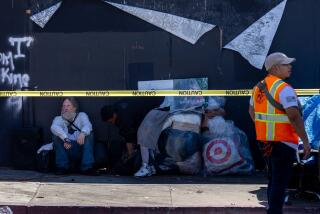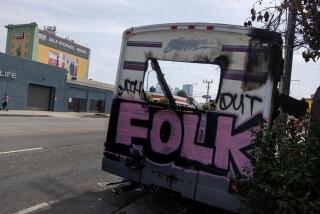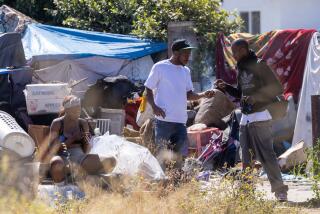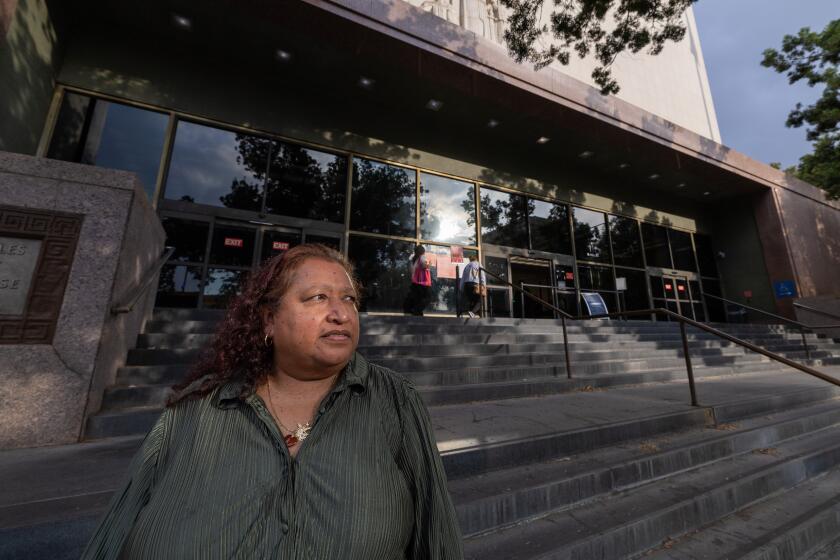Under pressure, L.A. agrees to provide 6,000 new beds to clear homeless camps under freeways
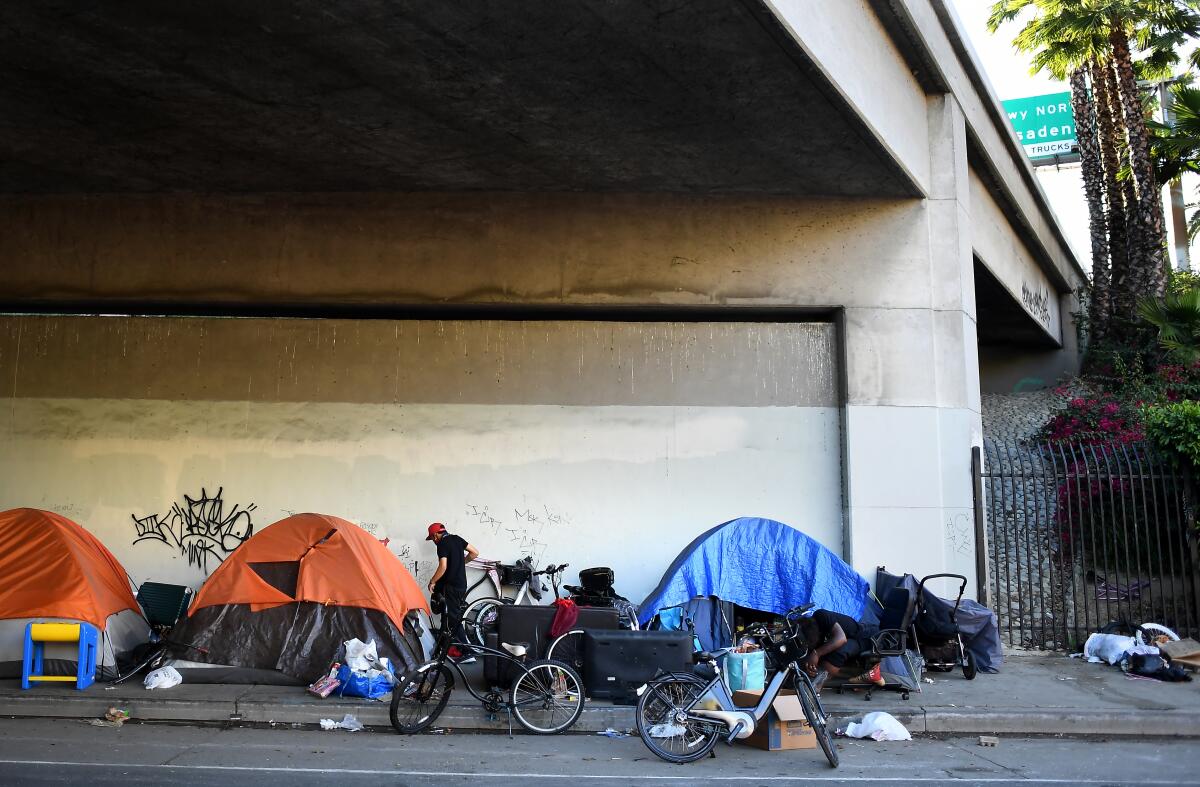
After frenzied weeks of negotiating, the city and county of Los Angeles announced an agreement Thursday to create 5,300 beds for homeless people over the next 10 months, rising to 6,000 over a year and a half.
The beds will be provided to comply with a court order issued last month by U.S. District Judge David O. Carter that requires city, county and homelessness officials to provide space in shelters or alternative housing for the 6,000 to 7,000 county residents living near freeway overpasses, underpasses and ramps.
The two parties had previously been at loggerheads over how to fund a plan to help these people after the judge raised concerns about the health risks of constantly breathing vehicle emissions.
Carter has been presiding over the case since March, when the advocacy group L.A. Alliance for Human Rights sued public agencies across the county, accusing them of allowing unsafe and inhumane conditions in homeless camps.
A hearing about the moving of homeless people living near freeways was canceled after L.A. city and county couldn’t agree to a plan to work together on how to proceed.
His order came as the city and county are attempting, through a statewide initiative called Project Roomkey, to house in hotels people who are older than 65 and most susceptible to the coronavirus. That population, in addition to people living near freeways, will be eligible for these new beds.
Elected officials including Los Angeles Mayor Eric Garcetti, City Council President Nury Martinez and county Supervisor Mark Ridley-Thomas attended court Thursday in an ornate ballroom in the Alexandria Hotel. Carter’s freewheeling sessions have taken place there since the pandemic closed the federal courthouse.
They all hailed the agreement as a sign of a continued commitment to improving the plight of people living on the street.
Garcetti said in court that if the effort succeeds, he’s hopeful it will inspire more commitments from the state and federal government to help address the crisis on city streets.
If people can be moved into the new beds, “I’m confident we’ll see the first reduction in homelessness in five or six years,” he said.
The deal announced Thursday vacates Carter’s previous order and came after two long days of negotiation late last week. It was overseen by U.S. District Court Judge Andre Birotte, who is a special master in the case.
In addition to creating 6,000 new beds in the next 18 months, the city will use a combination of 700 shelter beds and units of permanent supportive housing that are already under construction.
City and county officials said these beds could be different forms of shelters, including sanctioned campsites, safe parking, interim housing and buildings purchased by the city. The beds will be only for people within the city limits.
To assist in funding the services to care for and shelter these people, the county will pay the city $53 million this year and $60 million a year for the following four years. That money is separate from the hundreds of millions being allocated by the county to homelessness through Measure H.
As an incentive to make this deal happen, the county must pay the city $8 million if the 5,300-bed target is reached within 10 months. Carter has previously said that he wanted all of these people moved from the freeways by Sept. 1. In court Thursday, he appeared to back away from that deadline, saying he’d like to see progress by then.
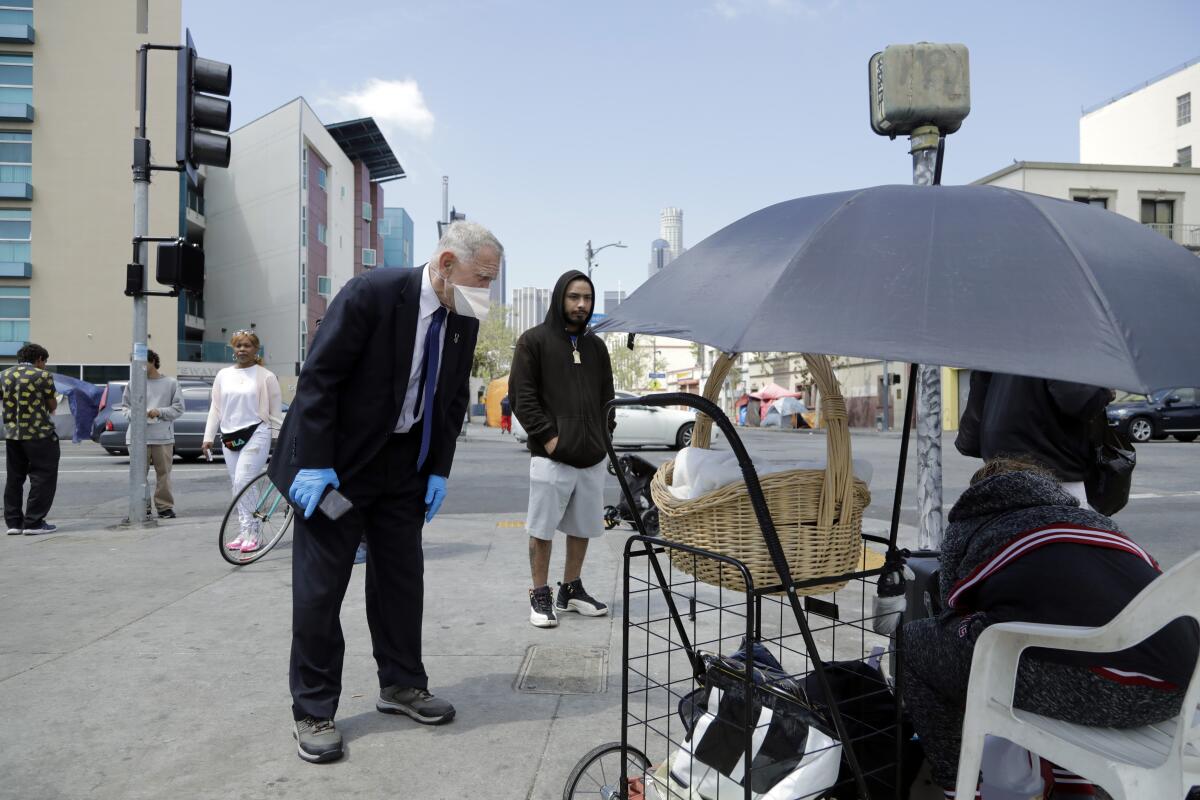
The county will have to come up with separate plans for people living near freeways in unincorporated Los Angeles County. Other cities in the county are not party to the lawsuit and don’t have to comply with Carter’s rulings.
Local officials had been concerned that Carter’s focus on freeways would distract from serving people who are most vulnerable to the coronavirus and at risk of dying. The judge, who is 76 and has been visiting encampments in Los Angeles for months now, fixated on these sites after city officials proposed using a Caltrans property under the 10 Freeway to house homeless people in prefabricated shelters.
Homeless advocates and city lawyers questioned the wisdom of that proposal, pointing to the health risks posed by vehicle emissions. After Carter issued his order, officials from the Los Angeles Homeless Services Authority scrambled to quantify how many people were living in these locations.
In an interview Wednesday, before the deal was announced, LAHSA Executive Director Heidi Marston said the work to relocate people near freeways “certainly adds a layer of complexity” to her broader push to get the sickest people off the streets.
At 76, Judge David Carter knows he shouldn’t be on skid row exposing himself to the coronavirus. But he wants more for L.A.’s homeless people.
She didn’t give specific numbers but said data show the people living at underpasses and ramps are largely white and not as acute in their vulnerabilities.
It was for that reason that both Ridley-Thomas and Martinez said they were happy people older than 65 and who were medically fragile would be given beds.
“Some of what had to happen was to cause the court to understand that in actuality, those who are freeway adjacent are not the most vulnerable,” Ridley-Thomas said.
He added that the deal “averted a crisis,” which could have arisen if either the city or county had chosen to appeal Carter’s decision to the U.S. 9th Circuit Court of Appeals.
Martinez said that the agreement is a major step in the right direction and that she hoped it could create momentum as local officials begin to discuss a broader settlement about homelessness with Carter.
“There’s such a racial disparity when it comes to this issue,” she said. “We just need to deal with it head-on, and we just need to stop going in circles. Start building shelters and beds and pay for services.”
The annual point-in-time count released Friday estimated the county’s homeless population is 66,433, up nearly 13% from the previous year, the second consecutive double-digit percentage increase. The estimate for the city was 41,290, up almost 14% — only slightly less than last year’s increase of 16%.
Those numbers are from January, before the pandemic, but they showed a continuing disparity in how homelessness is distributed by race. Black residents account for 8% of the population in Los Angeles County but 34% of those who are homeless.
In court Thursday, Carter said he would like to see the various parties spend more time thinking about how they could address this inequity in any settlement they might reach.
After the agreement was announced, an attorney for the L.A. Alliance for Human Rights, Elizabeth A. Mitchell, said she was encouraged to see the county and city offering up plans that were far more ambitious than previously imagined.
“There is so much more progress to be done, but the fact that you have the city and the county coming together to produce beds by the thousands, which is what we’ve been been advocating for from the beginning, gives us all a lot of faith that we can actually get this done,” she said.
More to Read
Sign up for Essential California
The most important California stories and recommendations in your inbox every morning.
You may occasionally receive promotional content from the Los Angeles Times.


